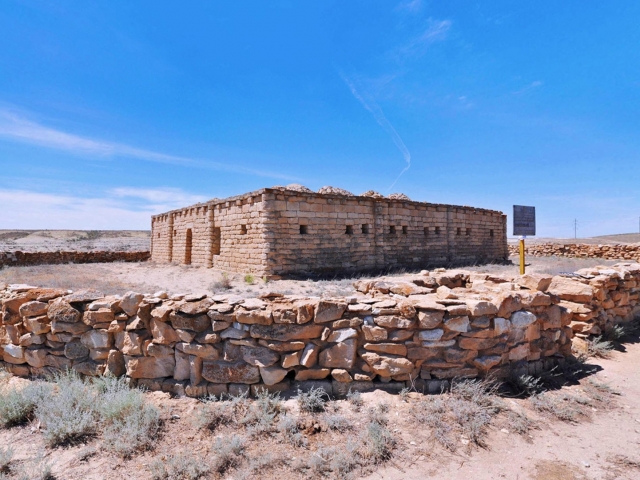Places
List of objects included in the map
Korkembai-akhun Mosque
Location: located in Beyneu district of Mangistau region, 40 km to the south-west from Beyneu village.
Coordinates: N 45°1' 34.54" , E 54°59' 27.37"
Description of the Monument: Identified by expedition of the Kazakhstani Institute for Cultural Heritage of Nomads under the leadership of A. M. Kogalbayeva (1992). Necropolis was first taken under the state protection by Decision of the Akim no. 362 dated 07.01.1993. By resolution of Akimat of Mangystau region no. 279 dated July 28, 2010 the monument was included in the governmental list of historical and cultural monuments of local value. Korkembai mosque is an architectural masterpiece and a gem of civil construction in the 19th century In Mangystau region. The mosque was built by order of the local rich man of Adai clan, Akbota-Zhemenei subclan. It is a rectangular building with 22 rooms, no basement, single-stage base and 28 different domes. The mosque was built of mud brick, the outer side of the walls is covered with limestone, the interior walls are plastered. In the center of the building there are 4 large rooms; on the perimeter there is a succession of rooms with archways and domed ceiling. Domes of the central halls are based on columns with square cross-section. At the corners of the facades and walls there are (2) pilasters. Doorways are arranged on the main east and west facades, in the walls there are window openings. In 1991 restoration works of destroyed sections of the walls, domes were carried out; a fence of limestone with sand-cement slurry is made. Near the mosque there are 3 wells, one of them with fresh water and two others for the cattle. In 2007 two domes in the rooms located along the perimeter of the building were destroyed.
Historical Data, Legends and Stories: People knew Korkembai as a religiously educated person who preach Islam. Before 1928 Korkembai mosque was an educational center and was used as a madrasah, many children of the people learned and acquired the knowledge here. In the mosque lessons were taught by such famous akhuns and imams like Abdullah-khazret, Shaudyr-ishan, Karakalpak Matkarim and others. Bekturlyuly Korkembai-akhun was persecuted by bolsheviks who fired all the teachers, shut down the mosque, and the akhun moved to Tajikistan. Details of his death and place of burial are not available.
Sources:
- 'Beyneu' - Almaty, 2002;
- 'Beckett Atany Spili
Zholy' Mr. Abdrakhmanov - Almaty, 2010;
- Archives
of Mangistau National Historical and Cultural Reserve;
- Archives of
'Kazproektrestavratsiya' Institute of the Ministry of Culture of the Kazakh
SSR, 1990.
Views: 3402
Video
3D Модель
Маршрут
Hazret Yerzhan Burial
Shopan Ata Necropolis and Underground Mosque
Shakpak Ata Necropolis and Underground Mosque (14th–19th centuries)
Khatam-Ishan Mausoleum
The earliest structures here date back to the second half of the 17th c. The necropolis was developed in time and space in a circle, i.e. the most ancient constructions remained in the center. Out of the two extant domed mausoleums, the structure in the southern part of the necropolis is of particular interest. ...








